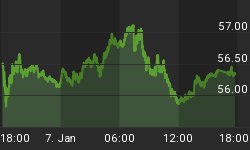Saudi Arabia is putting itself in a potentially dangerous geopolitical position as it seeks to continue its decades' long relationship with Washington while at the same time forging new ties, mostly based on oil markets cooperation, with Moscow.
The latest installment in this Saudi narrative came on Tuesday when Saudi Aramco said at the yearly World Economic Forums in Davos, Switzerland that it’s looking to acquire natural gas assets in the U.S. and is willing to spend “billions of dollars” there as it aims to become a global gas player. Saudi Aramco has recently diversified its holdings in many countries by investing in downstream assets, including currently owning the Motiva complex in Texas, the biggest oil refinery in the U.S.
Saudi Aramco Amin Nasser told Reuters at the forum that it intends to invest another $10 bn in the Motiva complex. He added, “We do have appetite for additional investments in the United States. Aramco’s international gas team has been given an open platform to look at gas acquisitions along the whole supply chain. They have been given significant financial firepower – in the billions of dollars.” Saudi Aramco has already indicated its interest in becoming a global gas and LNG player and one day exporting the fuel, but it has a long way to go put the infrastructure in place before they can come to fruition.
Playing both sides
However, despite Saudi Arabia’s close ties to U.S., dating back to the administration of Franklin Roosevelt during World War II and then afterwards when American oil industry know-how, management, best practices, and funds helped develop the Saudi oil industry and propelled it to where it is today, Riyadh has also been forming closer times with one-time adversary Moscow.
Related: How Tech Is Decentralizing The Energy Industry
The growing ties with Russia were born of oil market necessity. The two sides agreed to put an oil production cut deal in place in 2016 to drain down then oversupplied markets, with a downward trajectory on oil prices that saw Brent crude futures plummet from around $100 per barrel in mid-2014 to breaking below the $30 per barrel price point by early 2016. Thus was born the OPEC+ group of oil producers, led by Russia and Saudi Arabia.
Since their first oil cut agreement in 2016, the two countries last year agreed once again to cut output to drain down oil inventories amid fears of a global oil demand slowdown due to the ongoing trade war between the U.S. and China, and weakness in emerging markets coming at the same time as record high production from the U.S., Russia and Saudi Arabia - the world’s top three oil producing nations.
Related: Americans Are Not Ready For A Recession
The Russians and Saudi are now also considering tie-ups in gas, with Saudi Arabia looking to become a major investor in Russia’s fledgling but forward-thinking LNG sector that Russian President Vladimir Putin claims can one day compete with Qatar, Australia and the U.S. to be the top global LNG export leader. Therein lies the rub. As Riyadh and Moscow continue to boost their oil and gas interdependence both in terms of investment in each others’ sectors but also in terms of controlling global oil prices, the two sides will also increasingly forge an alliance geopolitically, which includes in the always violate middle-east where the U.S. and Russia are usually at odds, including being on opposite sides in the ongoing Syrian Civil War.
While it may be a number of years before it develops, there will come a time when Riyadh will be forced to choose sides between U.S. interests and Moscow’s growing regional hegemony ambitions and its increased influence in the middle east. At the end of the day, it’s a decision that no Saudi leader should be looking forward to (one that will likely fall on the shoulder of Saudi Crown Prince Mohammad bin Salman). It’s also a decision nonetheless that could dictate both global oil and gas markets and middle eastern regional stability for decades.
By Tim Daiss for Oilprice.com
More Top Reads From Safehaven.com

















